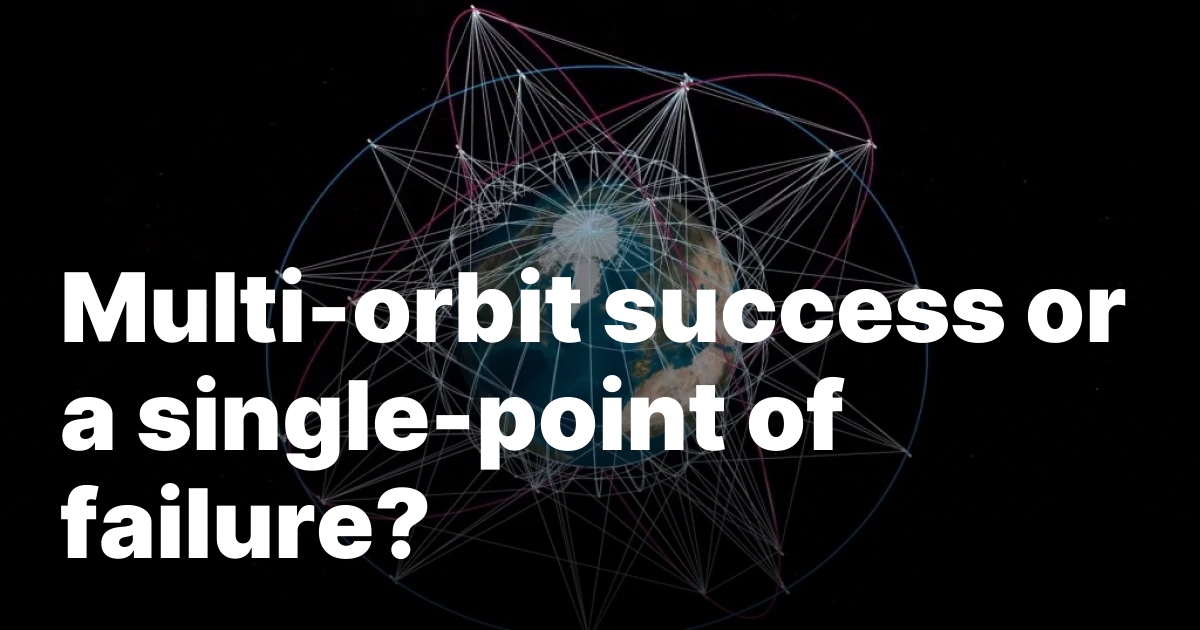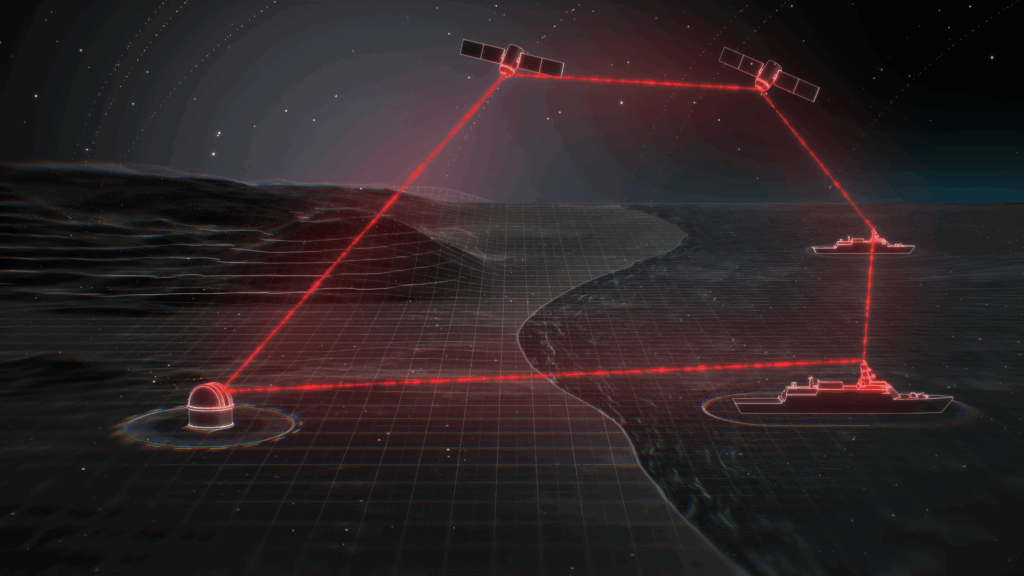Now Reading: Multi-orbit success or a single-point of failure?
-
01
Multi-orbit success or a single-point of failure?
Multi-orbit success or a single-point of failure?

The march toward single broadband terminals that can tap into multiple orbits promises greater resiliency and flexibility. It also centralizes risk in one device.
“Single point failures are not ideal,” pointed out Viasat executive Steve Gizinski when the topic came up during a March 10 Satellite Conference panel. “Especially in mission-critical systems — and really for anybody’s connectivity.”
To reduce the space and maintenance challenges posed by using separate terminals for geostationary, medium and low Earth orbit (LEO) satellites, antenna makers are racing to shrink size, cut costs and integrate advanced capabilities into a single device.
However, sometimes “the place to go is not one antenna that can do it all,” said Ulf Sandberg, managing director of British terminal maker Paradigm.
Speaking at the conference, Sandberg noted that just three years ago, when Russia invaded Ukraine, a LEO terminal in a contested area typically faced some form of countermeasure within an hour and a half of coming online, such as jamming or a grenade.
“That is apparently now down to about four minutes,” he said.
Counter countermeasures
Multi-orbit antenna makers have tricks up their sleeves to avoid becoming juicy targets.
Traditional terminals require high-power transmissions to reach geostationary satellites some 36,000 kilometers away, producing more heat that can expose them to adversaries.
According to multi-orbit flat-panel antenna specialist Kymeta, its metamaterials technology reduces power consumption to help mitigate this risk.
“One of the key value propositions for us is lower power,” Kymeta CEO Rick Bergman told SpaceNews, because “one way you can be detected is by thermal footprints.”
Satellite terminals also typically use separate apertures for transmitting and receiving signals, and each additional beam increases the chances of being tracked.
“We just have a single array,” Bergman continued, “which means we have more area so we can create a narrower beam that is harder to jam and also be detected.”
More terminals, more targets
Customers could deploy multiple multi-orbit terminals to mitigate the risk of a single point of failure, but these systems remain significantly more expensive than their single-orbit counterparts.
While multi-orbit architecture enhances resiliency in theory, truly diverse networks still require multiple terminals, Telesat chief commercial officer Glenn Katz said in a separate interview.
“If you need 99.99% availability or reliability at a particular location [or] facility, you have to have diverse connectivity,” Katz said.
Even beyond satellite terminals, “most of that data goes into some customer premise equipment [via] a device that manages the data between the two,” he continued. “If you only have one of those then guess what? If that fails, that’s a single point of failure.”
Don’t overthink it
Milo Medin, a former Google wireless networking executive and NASA project manager, has studied this challenge while planning a broadband satellite constellation as the founder of Logos Space.
“Why in the world do you want to put all that stuff in one box?” he told SpaceNews.
“Have multiple terminals and use a network. If you have multiple terminals and there’s a failure in one, you’ve got other paths.”
Advancements in networking also mean users are no longer limited to a single device at a time.
“If you have a LEO terminal operating in V-band and a GEO terminal operating Ku, you can probably enable them to operate simultaneously,” Medin said. “But if they’re in the same antenna, trying to actually do that becomes much more complicated.
“And l would bet you three separate terminals would be cheaper than one super complicated, multi-orbit terminal.”
While drilling three holes in an airplane wouldn’t be ideal, Medin said integrating multiple terminals through cloud networks and other internet technologies is generally more efficient, leading to faster product development, lower terminal costs and improved simultaneous operation.
In the end, balancing flexibility, cost and redundancy will determine whether multi-orbit terminals truly deliver resilience, or simply shift the risk elsewhere.
This article first appeared in the April 2025 issue of SpaceNews Magazine.
Stay Informed With the Latest & Most Important News
Previous Post
Next Post
-
 012024 in Review: Highlights from NASA in Silicon Valley
012024 in Review: Highlights from NASA in Silicon Valley -
 02Panasonic Leica Summilux DG 15mm f/1.7 ASPH review
02Panasonic Leica Summilux DG 15mm f/1.7 ASPH review -
 03How New NASA, India Earth Satellite NISAR Will See Earth
03How New NASA, India Earth Satellite NISAR Will See Earth -
 04And Thus Begins A New Year For Life On Earth
04And Thus Begins A New Year For Life On Earth -
 05Astronomy Activation Ambassadors: A New Era
05Astronomy Activation Ambassadors: A New Era -
06SpaceX launch surge helps set new global launch record in 2024
-
 07Space Force plans new ‘Futures Command’ amid pressure to speed up modernization
07Space Force plans new ‘Futures Command’ amid pressure to speed up modernization




















